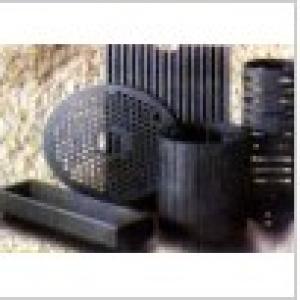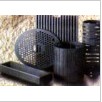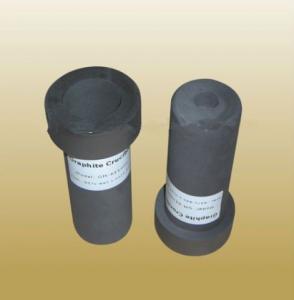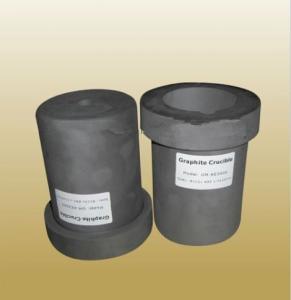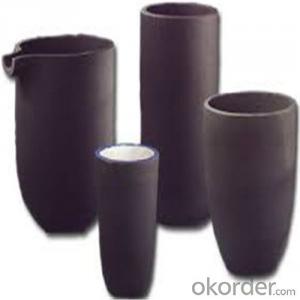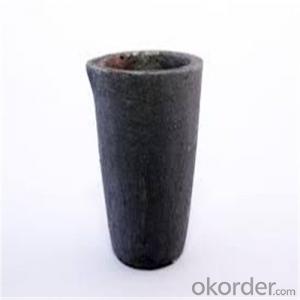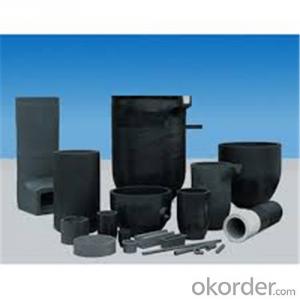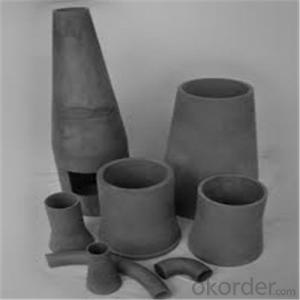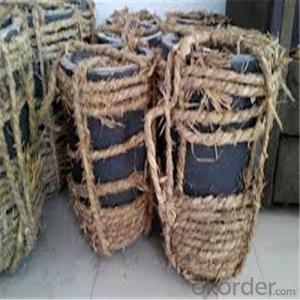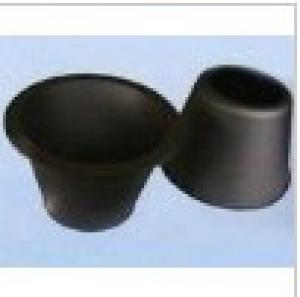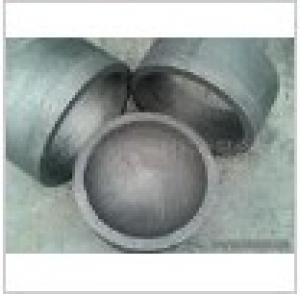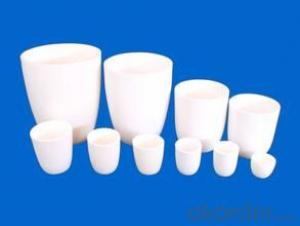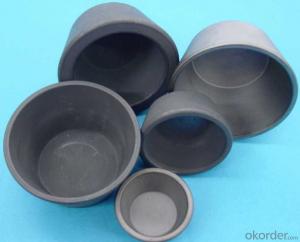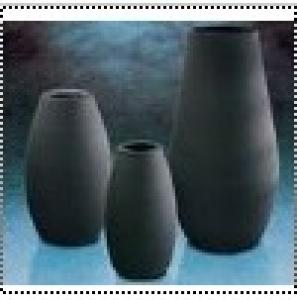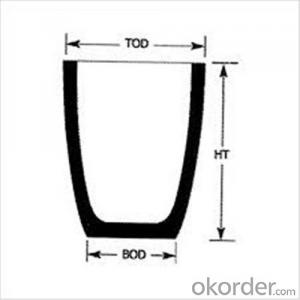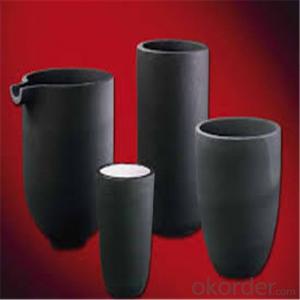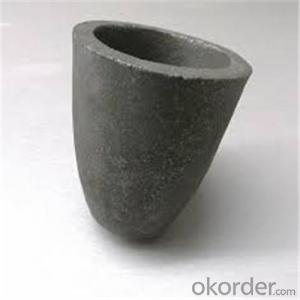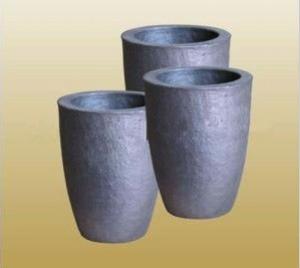High Quality Special Graphite Crucibles for Sale
- Loading Port:
- China Main Port
- Payment Terms:
- TT or LC
- Min Order Qty:
- 50 Sets set
- Supply Capability:
- 3000 Sets per Month set/month
OKorder Service Pledge
Quality Product, Order Online Tracking, Timely Delivery
OKorder Financial Service
Credit Rating, Credit Services, Credit Purchasing
You Might Also Like
Detailed Product Description
Special Shaped Graphite products are used in various industrails,including graphite crucible and graphite seal
Special Shaped Graphite products are used in various industries.it can be used as sealing in machinery as carbon graphite material, such as the quiet ring or the moving ring, doctorblade, piston-ring, sealing expansionring and the raw materias.
- Q: Can graphite crucibles be used for thermal analysis?
- Thermal analysis does not usually involve the use of graphite crucibles. Graphite crucibles are primarily utilized for high temperature purposes, such as the melting and casting of metals, as well as chemical reactions that necessitate intense heat. When conducting thermal analysis, diverse techniques are employed to examine the physical and chemical properties of materials during temperature changes. Some of these techniques comprise differential scanning calorimetry (DSC), thermogravimetric analysis (TGA), and measurements of thermal conductivity, among others. To carry out these types of analyses, specific equipment and materials are required. Generally, ceramic or metal crucibles are utilized due to their superior thermal conductivity and stability at high temperatures, which ensures precise and dependable measurements. These crucibles are engineered to endure thermal cycling and provide a controlled environment for the analyzed sample.
- Q: How is a graphite crucible used in the production of carbon composites?
- The production of carbon composites relies heavily on the utilization of a graphite crucible. These composites are composed of carbon fibers embedded in a matrix material, typically a resin or a metal. During the production process, the graphite crucible serves as both a container and a mold for the molten matrix material. Its composition of graphite is specifically chosen due to its high melting point and exceptional thermal conductivity. This allows it to endure the extreme temperatures required for melting the matrix material, which can range anywhere from several hundred to several thousand degrees Celsius, depending on the specific composite being created. Initially, the carbon fibers are prepared by aligning them in a specific manner to achieve the desired mechanical properties of the final composite. These fibers are then inserted into the graphite crucible, taking on a predetermined shape or structure. Following this, the matrix material, such as a resin or metal, is heated until it reaches its melting point and is subsequently poured into the graphite crucible. By virtue of its superb heat conducting abilities, the crucible aids in distributing heat uniformly throughout the molten matrix material. This ensures consistency and prevents the formation of any hotspots or uneven curing. As the molten matrix material cools down, it solidifies around the carbon fibers, completely encapsulating them. This process, known as impregnation or infiltration, involves the matrix material filling the gaps between the carbon fibers, effectively binding them together and forming a solid composite structure. The graphite crucible plays a vital role in maintaining the desired shape and structure of the composite throughout this process. After the impregnation process is complete, the composite is allowed to cool and cure, resulting in a rigid and durable material with exceptional mechanical properties. Subsequently, the crucible is removed, leaving behind the carbon composite in the desired shape. In conclusion, the use of a graphite crucible is indispensable in the production of carbon composites. It provides a stable and controlled environment for the impregnation process, ensuring uniformity and consistency in the final composite product.
- Q: What are the advantages of a smelting furnace using induction heating, and will it reduce costs?
- On the surface of the electromagnetic oven if made of metal material, the use of the electromagnetic oven, the upper surface of the material to the loss of power electromagnetic induction, electromagnetic oven on the surface to be made from insulating material, the heating part is at the bottom of the pot, right A;
- Q: Can graphite crucibles be used for powder metallurgy?
- Indeed, powder metallurgy can utilize graphite crucibles. Graphite proves to be an exceptional substance for applications involving high temperatures, and it is frequently employed in powder metallurgy procedures. Graphite crucibles possess a melting point that is notably high and exhibit outstanding thermal conductivity, rendering them perfectly suited for the process of melting and retaining metal powders during sintering or melting operations. Furthermore, graphite crucibles demonstrate commendable chemical resistance, enabling them to endure the corrosive impact of specific metal powders. In summary, graphite crucibles present themselves as a dependable and efficient option for applications within the realm of powder metallurgy.
- Q: Are there any specific cleaning agents or methods recommended for graphite crucibles?
- There exist specific cleaning agents and techniques that are suggested for the purpose of cleaning graphite crucibles. Graphite crucibles are commonly employed in applications involving high temperatures, such as metal melting, and they can accumulate various impurities over time. A commonly suggested approach to clean graphite crucibles involves a combination of mechanical cleaning and chemical treatment. In mechanical cleaning, a soft brush or cloth is utilized to eliminate any solid debris or residue from the crucible. It is important to avoid using abrasive materials or engaging in harsh scrubbing, as this may result in damage to the crucible. Following mechanical cleaning, a chemical treatment is often required to remove any remaining impurities. Acidic solutions, for example hydrochloric acid or sulfuric acid, are frequently employed in the process of cleaning graphite crucibles. These solutions possess the capability to dissolve and eliminate organic and inorganic contaminants. However, it is crucial to be aware that handling and working with acid solutions can be hazardous and necessitates caution. It is recommended to wear personal protective equipment, such as gloves and goggles, and ensure adequate ventilation. Furthermore, it is of utmost importance to adhere to the manufacturer's instructions and guidelines for cleaning graphite crucibles. Certain crucibles may have specific requirements or limitations with regards to cleaning methods and agents, and it is vital to comply with these recommendations to prevent any damage to the crucible. In conclusion, while there are specific cleaning agents and techniques that are recommended for graphite crucibles, it is vital to exercise caution, follow safety guidelines, and consult the manufacturer's instructions to ensure proper cleaning and maintenance of the crucible.
- Q: Can a graphite crucible be used for alloying or mixing metals?
- Indeed, the utilization of a graphite crucible is viable for the purpose of alloying or mixing metals. Graphite crucibles are renowned for their elevated melting point and exceptional heat resistance, rendering them appropriate for a plethora of high-temperature applications, including the alloying and mixing of metals. The graphite material itself is unreactive and does not taint the metals being melted or mixed. Moreover, graphite crucibles possess commendable thermal conductivity, guaranteeing uniform heating and efficient amalgamation of the metals. Consequently, they are widely employed in various industries such as metal casting, jewelry crafting, and metallurgy, serving the purpose of alloying and mixing dissimilar metals to achieve desired properties or compositions.
- Q: Can graphite crucibles be used for catalyst preparation?
- Yes, graphite crucibles can be used for catalyst preparation. Graphite crucibles are often used in high temperature applications due to their excellent thermal conductivity and resistance to thermal shock. They can withstand temperatures up to 3000°C, making them suitable for various catalyst preparation processes that involve high temperatures. Graphite crucibles provide a stable and inert environment for catalyst synthesis and preparation. They do not react with most chemicals, making them compatible with a wide range of catalyst materials and precursors. This allows for effective catalyst synthesis without the risk of impurities or unwanted reactions. Furthermore, graphite crucibles are known for their durability and long lifespan, which makes them cost-effective for repeated use in catalyst preparation. They can be easily cleaned and reused, reducing the overall cost of the catalyst preparation process. It is worth noting that the choice of crucible material may depend on the specific catalyst preparation process and the chemicals involved. While graphite crucibles are generally suitable for many catalyst preparation applications, some highly reactive or corrosive chemicals may require the use of alternative crucible materials, such as ceramic or quartz crucibles. Therefore, it is important to consider the specific requirements of the catalyst preparation process before selecting a crucible material.
- Q: What are the differences between quartz crucibles and glass crucibles in appearance, properties, uses, etc.?
- In fact, it is not scientific to store sodium hydroxide in quartz bottles or glass bottles. Sodium hydroxide will react with silica, a major component of quartz and glass, to produce sodium silicate with sticky and reactive properties
- Q: Can a graphite crucible be used for smelting or refining ores?
- Yes, a graphite crucible can be used for smelting or refining ores. Graphite crucibles are known for their high melting point, resistance to thermal shock, and excellent heat conductivity, making them suitable for high-temperature processes like smelting and refining.
- Q: Who is the melting point of graphite and diamond?
- Graphite is a thermodynamically stable structure, while diamond is thermodynamically unstable. Diamond is an atomic crystal, a spatial network structure. Each layer of graphite is netted, and between layers is the intermolecular force, which is the crystal structure between the molecular crystal and the atomic crystal. But because of the bond length, the covalent bond length in the layer of graphite is longer than the bond length of the diamond, and the intermolecular force is greater. The destruction of the chemical bond requires more energy. Agree with this statement. Added, diamond heated to 1900 degrees Celsius will be converted to graphite, graphite more stable.
Our products are sold all over the country, and exported to America, Germany, Spain, India, Japan and Korea. Besides, we have strict management and advanced production technology.
We promise we will win more clients and a larger market with honest commercial credit, high quality of products, competitive price and good service.
1. Manufacturer Overview
| Location | Inner Mongolia,China (Mainland) |
| Year Established | 2006 |
| Annual Output Value | US$2.5 Million - US$5 Million |
| Main Markets | 7.14% North America 7.14% South America 7.14% Eastern Europe 7.14% Southeast Asia 7.14% Africa 7.14% Oceania 7.14% Mid East 7.14% Eastern Asia 7.14% Western Europe 7.14% Central America 7.14% Northern Europe 7.14% Southern Europe 7.14% South Asia 7.14% Domestic Market |
| Company Certifications |
2. Manufacturer Certificates
| a) Certification Name | |
| Range | |
| Reference | |
| Validity Period |
3. Manufacturer Capability
| a) Trade Capacity | |
| Nearest Port | Xingang,Tianjin |
| Export Percentage | 31% - 40% |
| No.of Employees in Trade Department | 21-50 People |
| Language Spoken: | English, Chinese |
| b) Factory Information | |
| Factory Size: | 1,000-3,000 square meters |
| No. of Production Lines | 7 |
| Contract Manufacturing | 1,000-3,000 square meters |
| Product Price Range | Low and/or Average |
Send your message to us
High Quality Special Graphite Crucibles for Sale
- Loading Port:
- China Main Port
- Payment Terms:
- TT or LC
- Min Order Qty:
- 50 Sets set
- Supply Capability:
- 3000 Sets per Month set/month
OKorder Service Pledge
Quality Product, Order Online Tracking, Timely Delivery
OKorder Financial Service
Credit Rating, Credit Services, Credit Purchasing
Similar products
Hot products
Hot Searches
Related keywords
